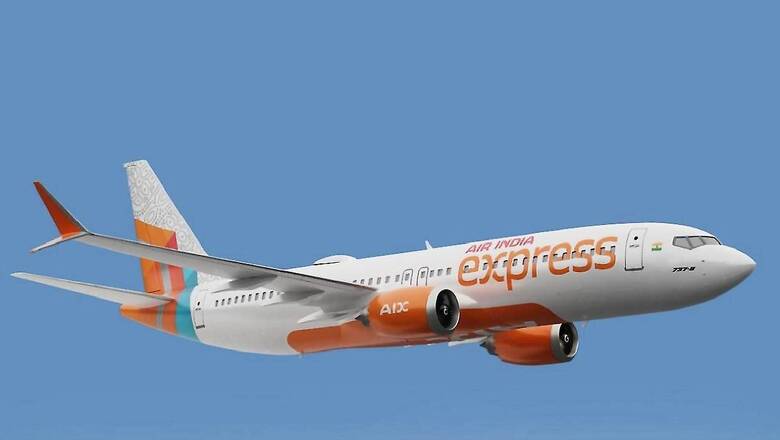
views
Days after India’s civil aviation regulator flagged potential rudder system issues in Boeing 737 planes, a Sharjah-bound Air India Express flight ran into technical issues mid-air and had to make an emergency landing at the Tiruchirapalli airport late on Friday.
The Boeing 737 aircraft, which was carrying 141 passengers, circled the airspace for at least two hours after the bottom wheel did not go in when it took off at 5.40 pm from Tiruchirapalli. Airport officials called this hydraulic failure and said the pilots decided to stay in the air as a precaution to decrease fuel before making an attempt to land.
On October 7, the Directorate General of Civil Aviation (DGCA) issued an advisory to all carriers about rudder system issues in Boeing 737 planes. At present, Air India Express, Akasa Air and SpiceJet operate Boeing 737 and, together, have close to 100 such aircraft.
The advisory was prompted by concerns raised by the US National Transportation Safety Board (NTSB) regarding a faulty component that could potentially jam the rudder control system.
The ministry of civil aviation said the DGCA has been informed and will be keeping a close watch on the situation while an internal probe has been launched into the incident. Airport director Gopalakrishnan said more than 20 ambulances and fire tenders were on standby to mitigate a major accident.
According to officials, the airport was put on alert and the flight was granted permission for a belly landing, but the pilots chose to make a normal landing and did so without any hiccups.
What is the issue in Boeing 737 planes?
The DGCA advisory was regarding the potential risk of a jammed rudder control system after the US NTSB report had highlighted safety concerns in the Collins Aerospace SVO-730 Rudder Rollout Guidance Actuators in Boeing 737 planes.
In August, Boeing informed affected operators of 737 planes about the potential condition with the rudder rollout guidance actuator. This helps align an airplane’s rudder with its nose wheel during takeoff and landing. It ensures proper alignment and control during critical phases of flight.
Later, on September 27, Boeing in a statement had said it had informed affected 737 operators of a potential condition with the rudder rollout guidance actuator, which is part of an option autoland system.
“The autoland system includes layers of redundancy and we are working with our supplier to develop additional guidance to address the potential condition,” it had said.
What did the DGCA advisory say?
The DGCA said all flight crews are to be informed through a circular/advisory regarding the possibility of a jammed or restricted rudder control system. “Appropriate mitigations must be communicated to help crews identify and handle such a situation,” it said.
Further, all operators were asked to conduct a safety risk assessment for aircraft to evaluate and mitigate the risk associated with the rudder control system. All Category III B approach, landing, and rollout operations, including practice or actual autoland, must be discontinued for these planes until further notice, it added. Category III B pertains to operations in low visibility conditions.
Among other measures, airlines were asked to mandatorily include discussion about potential rudder control system issues as a mandatory topic in recurrent training sessions. It will also be included in the Instrument Rating/Proficiency Checks (IR/PPC) during pre-simulator briefings.
“Operators have been instructed to include specific exercises in Recurrent Training and IR/PPC that simulate scenarios involving a jammed or restricted rudder control system, including rollout procedures. Appropriate flight crew responses and mitigations should be practised during these exercises,” the DGCA said.
It also said the interim measures aim to enhance safety and ensure that flight crews are well-prepared to effectively handle potential rudder control issues. The rudder rollout guidance actuator is designed to control the rudder’s movement during Category III B approach, landing and rollout operations.
What did Indian carriers say after the advisory?
Air India Express operates 61 Boeing 737s, while Akasa Air has a fleet of 25 Boeing 737 MAX aircraft. According to data available on planespotters.net, SpiceJet has 11 Boeing 737s in service.
“The advisory regarding the Boeing 737 rudder system is applicable to only five of the aircraft in our fleet. We have initiated the process of compliance in adherence to the regulatory requirements,” an Air India Express spokesperson said.
A SpiceJet spokesperson said none of its Boeing 737 NG aircraft are impacted.
(With PTI inputs)

















Comments
0 comment